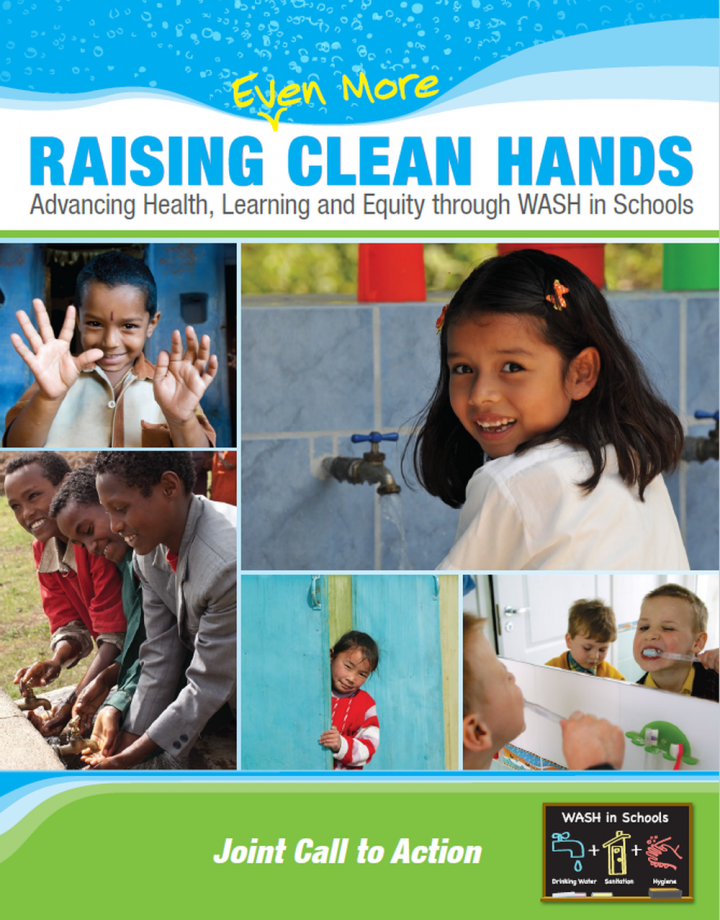Raising even more clean hands - Advancing health, learning and equity through WASH in schools
UNICEF (2012)

Published in: 2012
Pages: 36
Publisher:
United Nations Children's Fund (UNICEF), New York, USA
Author:
UNICEF
Uploaded by:
SuSanA Admin
Partner profile:
common upload
9136 Views
124 Downloads
Fulfilling every child’s right to water, sanitation and hygiene education remains a major challenge for policymakers, school administrators and communities in many countries. Although steady progress has been made to safeguard the well-being of schoolchildren, almost half of all schools in low-income countries still lack access to water and sanitation facilities.
The lack of quality data on WASH in Schools coverage is a significant barrier to identifying children’s needs, establishing and carrying out effective programmes, and monitoring progress. Although more countries are responding to UNICEF surveys on access to water in primary schools, many have not defined minimum standards for WASH in Schools. In many cases, national education monitoring systems do not include access to WASH in Schools as an indicator, therefore, the quality of data on coverage and access remains questionable. It is not unusual to find that a national monitoring system considers a school to be providing adequate access to sanitation, even though 300 children are using one latrine hole. As policymakers, government representatives, citizens and parents, we all have a role in making sure that every child receives the benefits of WASH in Schools. By applying experience gained over the past decade, we can bring programmes to scale and sustain them to improve health, advance learning and enable children to serve as agents of change for their siblings, their parents and the community at large.
Bibliographic information
UNICEF (2012). Raising even more clean hands - Advancing health, learning and equity through WASH in schools. United Nations Children's Fund (UNICEF), New York, USA
Filter tags
English Recommended by SuSanA (other than SuSanA publications) Schools















